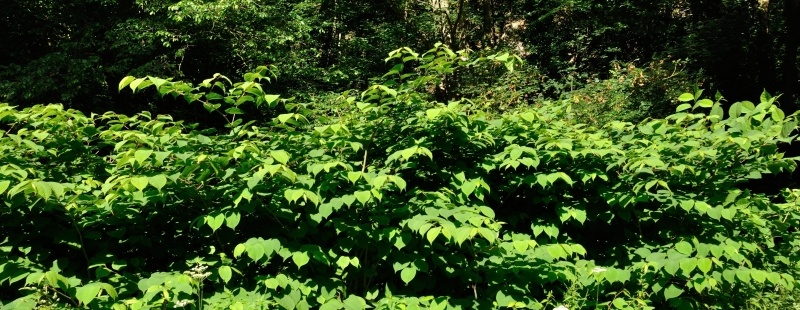What kind of responsibilities do you have as landowner if you discover Japanese knotweed on your property? What are your obligations as a seller? What do you need to know if you intend to buy a new property and you have reasons to believe that it is affected by knotweed?
Japanese knotweed is one of the most invasive plants in the UK. The plant was brought to Britain by the Victorians in the nineteenth century because of its beauty. However, due to its ridiculous rate of growth and deep root system it has severely affected many properties in the UK. It is considered an 'Invasive Alien Species' and can force its way through a brick wall and it can spread beneath the foundations of a property affecting its structure. There have been cases in the UK where people were forced to demolish their dream house and rebuild it as the cost of treatment of Japanese Knotweed would have been higher than the value of the house.
Recent 'knotty' case establishing the duties of landowners
The long-awaited decision in the case Williams v Network Rail Infrastructure, also known as Waistell, is a reminder that landowners have the obligation to monitor Japanese knotweed all the time.
The claimants in this case were the owners of two semi-detached bungalows in South Wales. They discovered that they could not sell their properties due to the presence of Japanese Knotweed on the neighbouring railway embankment owned by Network Rail Infrastructure.
The knotweed had been present on the railway embankment for more than 50 years and the Network Rail was aware of that, not least because both claimants had made several complaints to the service department in this regard. Since Network Rail ignored their complaints, Williams and Waistell decided to bring the following claims:-
- In nuisance for interference with their quiet enjoyment of land;
- Damages because the value of their property had been significantly diminished; and
- A mandatory injunction to force Network Rail to eradicate knotweed on its land.
The Court found that Network Rail had considerable knowledge of the potential impact of Japanese knotweed, particularly about the damage that could be caused by this plant but they still refused to take any steps to eradicate it. The roots had spread underneath the bungalows although they had not caused any damage to the structure of the properties or to the surrounding subsoil. Nevertheless, since the knotweed was within 7m of the built structures, it was considered "proximate nuisance" and therefore actionable.
The Court decided that Network Rail, as landowner, was in breach of their positive duty to ensure that any knotweed on their property was not affecting the market value of the neighbouring properties. Hence, they had to compensate the neighbours for the cost of an effective treatment against knotweed, for the diminution in value of their properties and for general damages. The Court did not award the mandatory injunction.
Even though this is only a County Court judgement, it remains a landmark court ruling which opens the floodgates for further compensation claims. At the same time, those who bring a claim will have to prove that the knotweed has spread from land owned by another person.
Implications of the knotweed-issue in conveyancing
As part of the conveyancing process, when a person intends to sell a property, he/she must complete a Property Information Form. This form addresses the issue of Japanese knotweed. Therefore, the seller is under an obligation to disclose the presence of this plant if he/she has any knowledge about it.
If the seller is aware of the problem, and it later becomes clear that he had knowledge about the presence of knotweed on his property and he was trying to conceal that, the buyer can claim compensation for misrepresentation.
From the buyer's position, if he/she suspects that the property might be affected by knotweed then the best idea would be to arrange for an expert to undertake a survey. Even though the cost of a survey is not low, it is still considerably lower than the cost of eradication treatment. The optimum time to undertake a survey for Japanese knotweed would be between April and September when the plants can be easily identified as they are within a growth stage. During winter time, the plant loses its leaves and the expert would only be able to observe the 'bamboo-like' canes in the best case scenario. It is however not unusual for landowners to cut down Japanese Knotweed.
If the expert identifies the presence of Japanese knotweed on a property, he/she will be able to assess the level of infestation, the risk posed to the property and they also recommend appropriate remedies which can range from treatment with particular weedkillers to excavation and disposal of soil.
If you have land upon which there is Japanese Knotweed, Himalayan balsam or giant hogweed, you will need to consider the provisions of the Anti-social Behaviour, Crime and Policing Act 2014.
Follow this link to the Home Office website, Japanese Knotweed Information.
Another reason of concern in the case of Williams was that a potential buyer may not be able to get a mortgage offer. The Council of Mortgage Lenders advise that every lender can determine its own policy regarding this issue. The presence of knotweed and the severity of the problem may determine the lender either to refuse to lend on the property or to ask for evidence of eradication treatment. The buyer will need to know at this stage the price of the eradication treatment and whether the seller is willing to bear the cost.
At Clapham & Collinge Solicitors we have a dedicated team of property experts who are able to provide you with all of the necessary information, support and legal advice on property transactions such as buying or selling a property.
For more details on any property related issues, please contact us on
